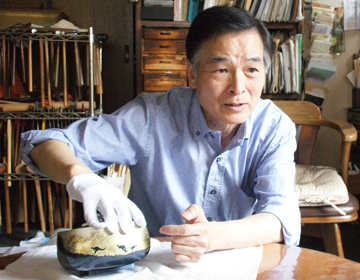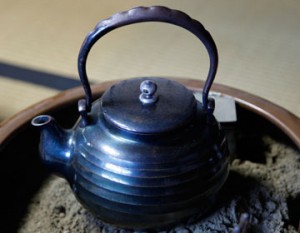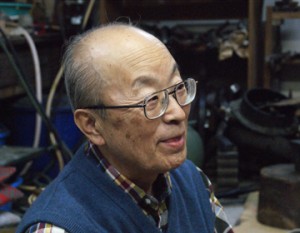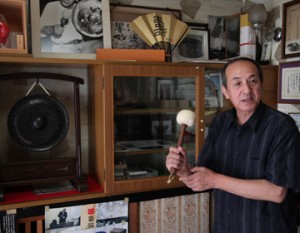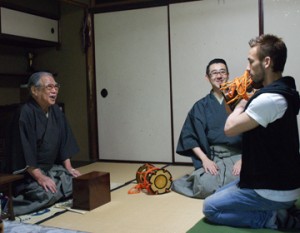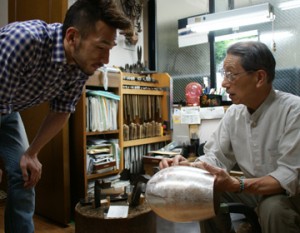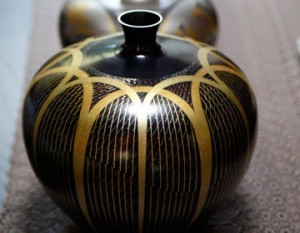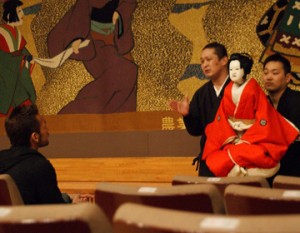Drawing patterns by engraving metal
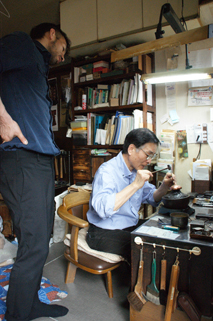
”I’m not exaggerating when I say that the ”katana” encompasses all aspects of ”kogei”.” commented Important Cultural Asset holder Morihito Katsura. He told us that all forms of ”kogei” other than ceramics and porcelain are embodied in the ”katana”. Of course, that includes chasing.
Chasing is the art of engraving metal to create a decoration. It is a skill with a long history, and has been found in ruins from the Tumulus period. In Japan, it has been used in abundance to decorate artworks related to Buddhism, and during the Muromachi period, it developed as decorations on swords and suits of armor.
”During the war, warlords assigned land to reward his followers. But during Edo period, in times of peace, elaborately adorned swords and suits of armor were given instead. Embellished sword and armor were in great demand, especially among feudal lords with many followers.” In modern times, chasing was used to decorate utensils and ”obi-dome” in addition to battle gear.
Creating 3 dimensional designs
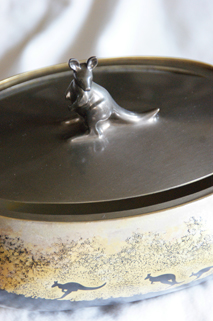
Looking at Katsura’s work, Nakata commented, ”It not only involves skill, but the design is very stylish!” ”Well, I put a lot of thought into the design as well,” Katsura answered. He creates various objects including vases, incense burners, and ”obidome” shaped like a minnow in 3-dimension.
”People judge our pieces based on whether or not they like it. Technique and skill come next. So it’s important to place priority on design.”
Design is made possible by technique. A feature of Katsura’s work is that they are 3-dimensional. It is a rare skill very few possess in Japan. In addition, Katsura is said to be the only one who can create the ”height”. A metal alloy called ”shibuichi,” which combines silver and bronze, is very hard, lacks ductility, melts easily with heat. This makes it extremely difficult to stretch to give it height.
Chasing in its entirety
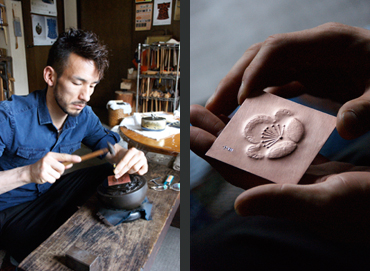
Nakata had the opportunity to try engraving a relief. This ended up being quite difficult. It was hard to engrave the plum blossom design, requiring a lot of concentration, but he also needed to adjust how hard he hit the chisel to adjust the depth. Watching Nakata struggle, Katsura gave him words of encouragement ”Yes, I think you’re getting the hang of it. That’s it.”
Katsura’s work have a lot to do with inlay casting and hammering, requiring a lot of skill.
”There is a method called ”iroage” where you put metal into chemical agents, and the metal turns into its original color as a result of the chemical reaction. There are about 7 different colors of metal. In the west, metals do not have this much variation in color. ”
In addition to the variety of metals in Japan, the range of expression is expanded by pasting silver foil on the surface of the vase, or shaving a part off and adding an inlay with another kind of metal.
”There is a limit to what you can achieve with a single technique. Chasing or metal engraving is a total of all the different techniques.” Katsura said in conclusion.
Katsura continues with his challenge in pursuit of a new expression.



